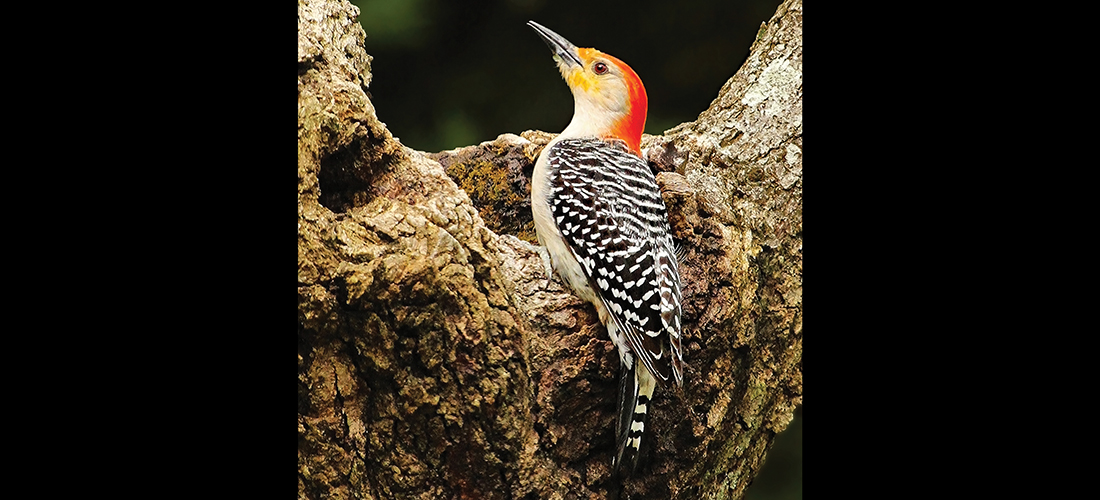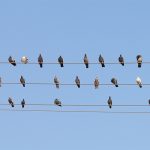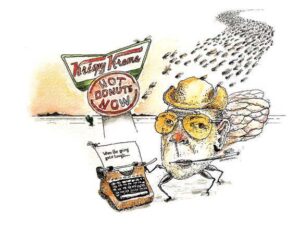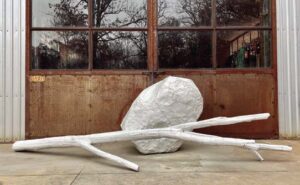
Knock, Knock
Who’s there? Red-bellied . . .
By Susan Campbell
Here in central North Carolina, we are fortunate enough to share the landscape with six different species of woodpeckers. With pileateds being the largest and downys being the smallest, the red-bellied woodpecker is about in the middle. Often it is possible to identify these feisty birds without the aid of binoculars. And once you recognize their loud, rolling calls, you will likely realize how common and widespread the species is.
Found in mixed forests of the Piedmont, pine forests of the Sandhills, and into the flooded bottomlands of the Coastal Plain, red-bellieds are adaptable birds with a rather broad diet. They require sizable dead trees, referred to as snags, for both roosting and nesting. Their heavy chisel-shaped bills are the perfect tools for drilling a new home when need be. Typically, a new cavity is constructed each spring before nesting begins.
Interestingly, both the male and female will take part in creating the new nesting space. However, birds may take advantage of exiting cavities in live pines (created by red-cockaded woodpeckers) in the Sandhills, if the entrance is large enough for them to squeeze through.
Although adult birds do have a reddish wash on the belly during the spring, it is their red head feathers that get people’s attention. The males have bright feathers from their forehead all the way down the back of the neck, whereas the red on the females is limited to the nape. The back, as with many species of woodpeckers, is covered with black and white barring. Young of the year are easily identified by mid-summer — they have gray heads with no red appearing until early fall.
Given their size, red-bellieds are most often seen hitching along the trunks and larger branches of trees, searching for food. They both look and listen for insects of all kinds on, or even in, the bark. They can pry the wood away or will pound on the outer bark to uncover prey hidden underneath. However, they will take advantage of fruit or nuts later in the season. Since they are opportunists, it is not surprising that they also take advantage of bird feeders. Not only will you see them eating suet but also black oil sunflower seeds. Sugar water feeders may even be attractive to them. The birds can become a nuisance if they become too vigorous and break the feeding ports on hummingbird feeders in their attempts to reach the nectar inside.
Red-bellieds are readily identifiable in flight, given the translucent white patches near the wingtips. Their size and undulating flight style also aid in identification. The fact that they tend to be vocal when on the wing at this time of the year also gives them away. So keep an ear out and an eye to the sky — one of these handsome birds may just get your attention sometime soon. PS
Susan Campbell would love to receive your wildlife photos and reports. She can be reached at susan@ncaves.com.





